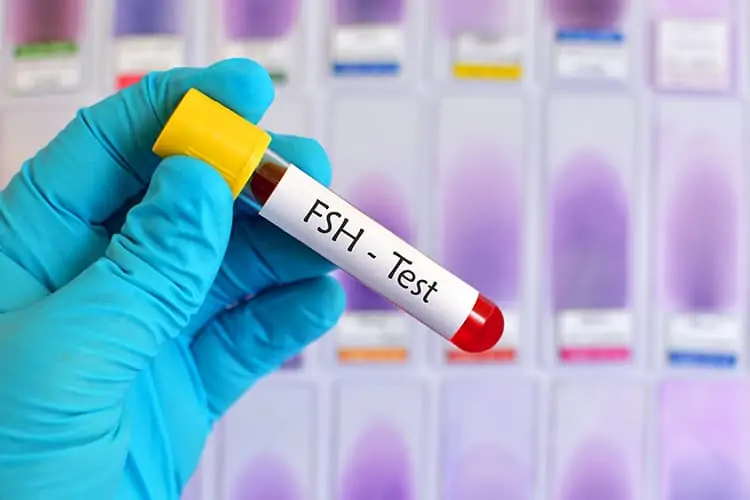Hormones are an important part of measuring your fertility, but they can be very hard to understand. Read about the different types of hormones and what they mean to you and your fertility.
Hormones are chemical messengers in our body, and your fertility team will often measure these to help understand your individual fertility status and any necessary treatment. Understanding what your laboratory results mean can be challenging and stressful, especially when confronted with different interpretations on the internet or message boards. You may go looking for answers and end up confused or frustrated. Do not despair, we are here to help! You may find the article on Female Reproductive Physiology helpful also.
Estradiol (Oestradiol)
Estradiol (a type of estrogen) is a very important hormone in the female reproductive system as it aids in ovulation, maintaining eggs, and stimulates the lining of your uterus to thicken. Many factors may influence this level – including pregnancy, menopause, medications, and pituitary gland function. The amount of estradiol in your body is very dependent on what phase of your menstrual cycle is occurring when the blood work is drawn. Most times, an estradiol level will be taken with the beginning of your period – this is to ensure that you are in a “baseline” state – and that no ovarian follicles or cysts are actively producing this hormone. If your level is above baseline (usually >80pg/mL), this may signal that you are later in the first phase of your cycle than expected (and an egg is already growing), problems with ovarian reserve, an ovarian cyst, or something else. Very low estradiol levels can be seen in menopause or if your pituitary gland is misbehaving.


Progesterone
Progesterone works alongside estrogen, although in a different way, to orchestrate the menstrual cycle and beyond. It has a big role in your periods (particularly after ovulation) and in maintaining a pregnancy. In fact, it is often referred to as the “glue” of pregnancy. Typically a progesterone level greater than 3ng/mL indicates that you have ovulated. During pregnancy, progesterone levels may reach much higher levels. It is the falling level of this hormone that signals your uterus to shed its lining and restart another menstrual cycle. If the levels do not fall because pregnancy is achieved, then this shedding does not occur and progesterone continues to be produced. Progesterone levels can be tricky to interpret because this hormone is secreted in pulses – meaning that a single snapshot level may not tell all.
FSH
Follicle Stimulating Hormone (FSH) comes from your brain and nicely asks your ovaries to begin selecting an egg to grow at the very end of a menstrual cycle in preparation for the upcoming one. High FSH levels (typically >10-15mIU/mL) indicate that the brain is having to pump out larger amounts in order to get the ovaries to respond to this request—this is why an elevated FSH level may mean a low ovarian reserve. This level always has to be interpreted in conjunction with your age – as well as your estrogen level at the time it is drawn. Keep in mind that there is cycle-to-cycle variability with FSH levels however your highest level is the most predictive of your prognosis for fertility treatments or pregnancy. This is most true for older women.


LH
Luteinizing Hormone (LH) goes together with FSH like two peas in a pod. As we now know, the main objective of FSH is to get an egg to start growing. LH is a supporting character that helps this to happen, sort of like a very good assistant! A giant surge of LH begins the all-important process of ovulation. Low LH levels may indicate that your brain is not talking to your ovaries, and high levels are sometimes seen in PCOS or ovarian failure, or it may mean that ovulation is imminent. An LH level is usually interpreted along with the other hormones mentioned above.
AMH
Anti-mullerian hormone (AMH) gives us a very good estimate of your ovarian reserve, or how many eggs are remaining. This is because the eggs that you have resting in your ovaries produce this hormone – so if AMH is high we can assume that there are many eggs, and if low then the opposite. It is very important to understand that an AMH level does not predict pregnancy—meaning that even if your AMH is low it does not necessarily mean that pregnancy cannot or will not occur. Rather, AMH should be interpreted along with other markers of ovarian reserve – including FSH, visualizing your eggs on ultrasound, and age.


Prolactin
Prolactin is best known for being the hormone that tells the body to produce breast milk after having a baby. Before pregnancy, however, it is important in maintaining normal periods, particularly the luteal phase of the menstrual cycle (the two weeks before your next period). A high prolactin level may give you very irregular or absent periods. It may also cause a short luteal phase and not enough progesterone to sustain a pregnancy. A normal fasting prolactin level is generally less than 20ng/mL (although may vary from lab to lab). There are MANY potential causes of an elevated prolactin level and you should discuss a high result with your fertility provider.
Thyroid Stimulating Hormone (TSH)
Having an underactive or overactive thyroid gland can cause problems with your period, like abnormal bleeding. Untreated hypothyroidism (TSH levels that are high), may also negatively impact fertility. Although a TSH level of <4.5mIU/L is in the normal range for non-pregnant women, a different value is usually targeted for women who are actively attempting conception or are currently pregnant (<2.5mIU/L) and this can be achieved using medication. Your fertility practitioner will help to determine what your goal TSH level will be.
Other specific laboratory tests, such as androgen levels (for example, testosterone) and insulin resistance tests may be recommended for you if there is a questionable diagnosis of polycystic ovarian syndrome (PCOS) – you can learn much more about this by reading our article about PCOS here.
It is very common to find multiple interpretations of the same lab value and to become anxious about what the results may mean for you and your family building goals. We hope that you have found some clarity by reading this article. It is always a good idea to have a conversation with your fertility practitioner about your specific results and what they might be telling us. Writing down a list of your questions beforehand can help, too!
If you want to read more about women´s anatomy and their reproductive system, we can recommend following the link to our article on the subject.



